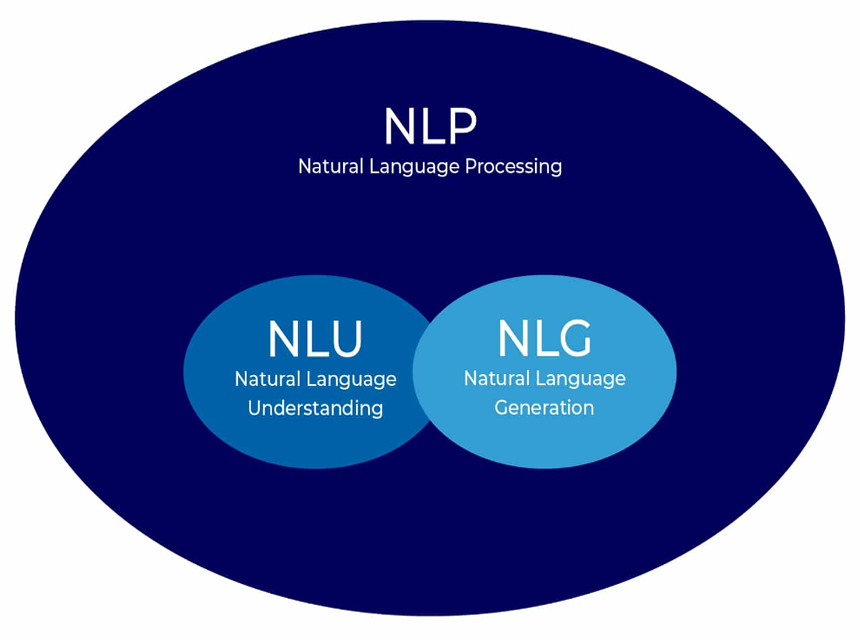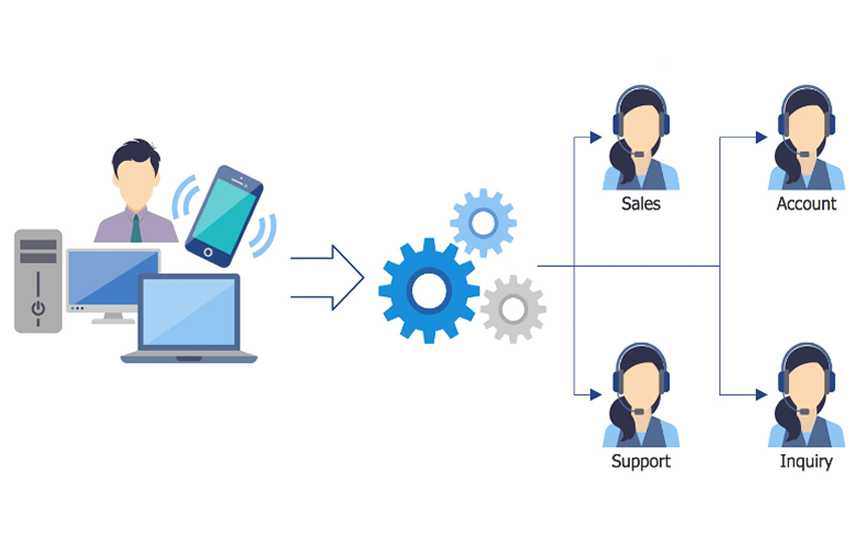- March 2, 2023
- Posted by: Anna Rosenkranz
- Category: Blog

How Does Natural Language Understanding Work? – All There Is to Know
Given that Natural Language Understanding helps computers understand human speech and conversation, it’s quickly becoming a huge part of the modern world. As for how it works, you can find out from this write-up.
In the fairly recent past, the only way for you to communicate with a computer was through programming languages. This is because, at their core, computers only understand machine language, which is coding made up of 1s and 0s. Higher-level programming languages like Java, JavaScript, Python, and C++ allowed users to write English-like syntax that they would convert into machine language for the computer to understand and provide feedback. However, with Natural Language Understanding soon, you may not need programming knowledge for computers to understand you. But how does Natural Language Understanding work? You can find out below.
What is NLU?
Natural Language Understanding is one of two subsets of Natural Language Processing, with the other subset being Natural Language Generation. To understand one, you may need to be familiar with the other two.
Starting at the top, Natural Language Processing is a branch of computer science and Artificial Intelligence looking to allow computers to understand text or speech the same way as humans. For instance, it can analyze text from a contract and understand the information included.
Fortunately or unfortunately, human language isn’t simple, and even in English, some words may have different meanings. Furthermore, what you mean in text or speech may differ depending on the context.
For example, the word letter may refer to a written note in an envelope or one of the letters of the alphabet. As such, the only way to know which of the two a person is referring to is to understand the context. This is where Natural Language Understanding comes in for computers.
NLU identifies context and derives meaning and insights to help interpret the natural language. It may even interpret natural language through mistakes that people often make in dialogue, and this requires an element of decision-making on the computer’s part.
Natural Language Processing would take everything at face value, while Natural Language understanding would infer the meaning or intent behind the speech.
As for Natural Language Generation, it’s the subset of NLP that looks to produce human-like text or speech so the computer can communicate back to you the same way a human would. It can also generate text on par with human writers, including elements like fluidity, emotion, personality, etc.

How Does It Work?
Natural Language Understanding works by breaking down human speech using algorithms into a data model that the computer can understand. It’s based on two fundamentals, i.e., intent and entity recognition. Intent recognition helps identify sentiment in spoken and written language and allows the computer to determine the meaning behind text or what was said.
On the other hand, entity recognition identifies the entities in the speech or text and then extracts important details about said entities. In a sentence like “how to transfer a domain between GoDaddy accounts,” the words domain and GoDaddy accounts may count as entities.
Also, entities are grouped into two different categories that include named entities and numeric entities. Named entities may include categories like people, places, companies, etc., while numeric entities include numbers, currencies, and percentages.
What is NLU Used For?
Natural Language Understanding is already a part of modern-day life, with several popular applications in the examples listed below.
Chatbots
Chatbots are programs capable of conversing with human beings in natural language via text. You may have encountered one or two while looking for a particular product or service as more companies are using them for customer service. Often, they follow a script which makes them extremely useful for answering frequently asked questions.
Also, they can be used in various industries, including healthcare. Some of the potential advantages of implementing chatbots in healthcare institutions may include 24/7 availability, reduction in labor costs, automated invoicing and payments, improved internal communication, etc.
Conversational Interfaces
Some conversational interfaces that you’re likely already familiar with include Google Home and Amazon Alexa. Some things you could do with Google Home, for instance, include managing tasks, controlling devices like speakers or TVs, controlling smart home devices, and even getting answers to finance and sports-related questions.
Amazon Alexa also shares a lot of these features. Notably, these conversational interfaces need natural language understanding to determine user intent which allows them to take action and craft appropriate responses.
Interactive Voice Response
Like most other applications that use AI, interactive voice response is an automated system that helps businesses by interacting with callers. Often the nature of the interaction involves the IVR system giving callers choices via a menu. They can also be useful in data collection
Similar to chatbots, you may have encountered an IVR system in the past. Some statements you might hear from an IVR system include examples like, “If this is your first time calling, press 2.” Alternatively, you might hear something like, “If you’d like to speak to a customer care representative, press 5.”

Machine Translation
Natural Language Understanding is an essential part of machine translation. Although machine learning plays a big role in analyzing text, the computer also needs to infer intent and things like context to provide a more accurate translation from one natural language to another. This would be impossible to do without Natural Language Understanding.
It also uses the other subset of Natural Language Processing, i.e., Natural Language Generation, when generating the translated text from scratch.
Data Capture
Companies can also use Natural Language Understanding to collect information about people, objects, and events from individuals. The program should allow the computer to understand verbal information despite mistakes and enter the data automatically.
Final Thoughts
While talking computers and robots have been a common trope in futuristic movies and TV episodes, it may not be much longer before they become a reality in everyday life. Fortunately, if and when that eventually comes to pass, you’ll have a basic understanding of how it came to be. That way, if a friend asks, “how does Natural Language Understanding work?” you know how to explain it. You could even learn more about NLU and AI in general, including the programming that has made it possible.
References:
https://ligsuniversity.com/blog/an-overview-of-chatbot-technology-in-healthcare-institutions

